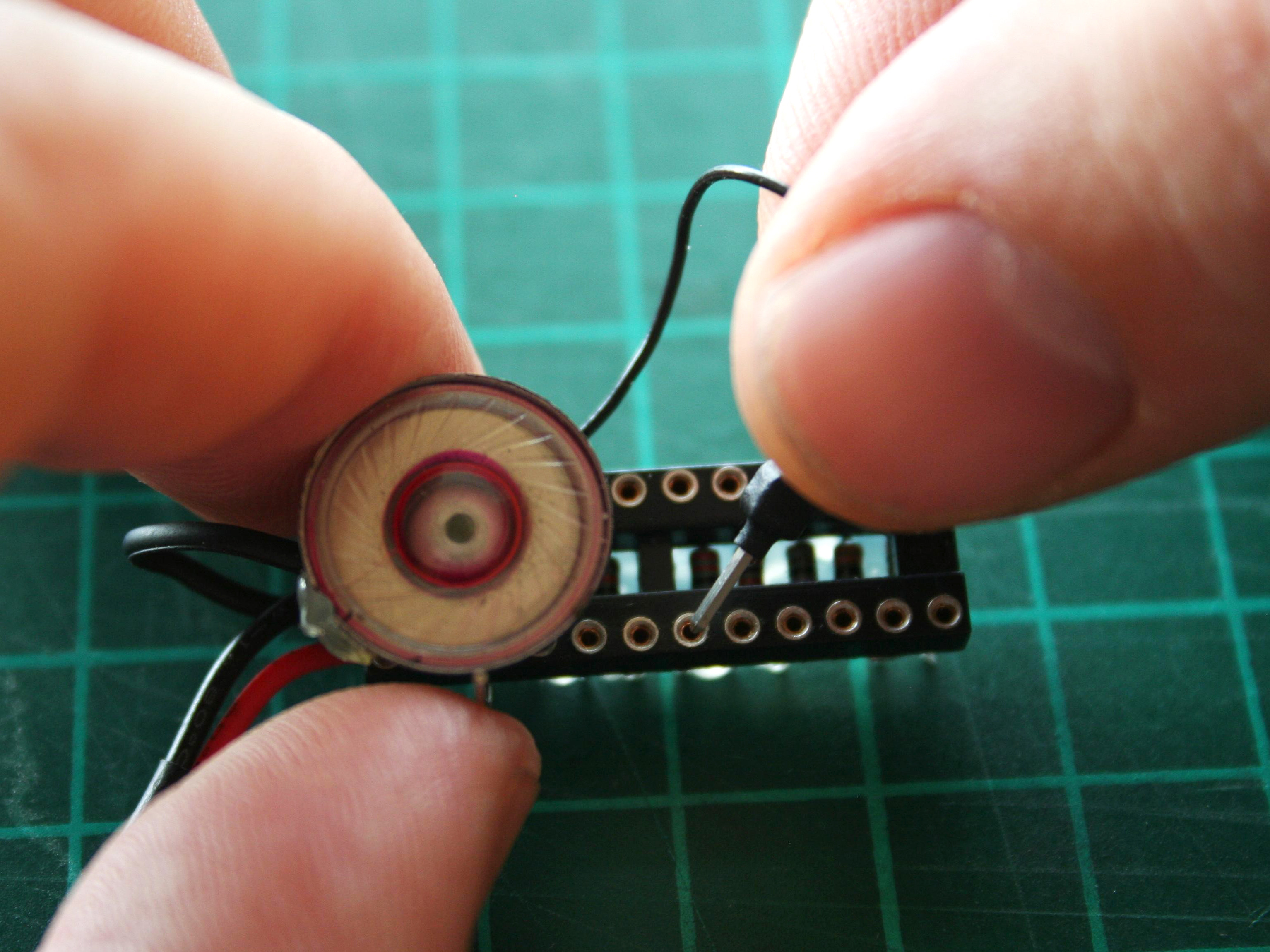I was playing around with a Picaxe microcontroller one day, trying to make a little keyboard. I wanted to build an absolutely minimal hardware frame that I could put together quickly without a circuit board. The result was the MoofTronic — a small electronic instrument built on a 24-pin IC socket. To play 8 different notes (1 octave in the key of C) against a fast-modulation drone, you touch a stylus to 8 legs of the socket. It also has a small antenna that you can touch to add an effect to the note being played. The 8-pin Picaxe microcontroller that runs the software and generates the sounds sits in one end of the socket and has a small speaker mounted on top. A programming port allows you to easily debug and test new sound-making programs.
Projects from Make: Magazine
MoofTronic Mini Synth
Make an electronic instrument built on a 24-pin IC socket.


